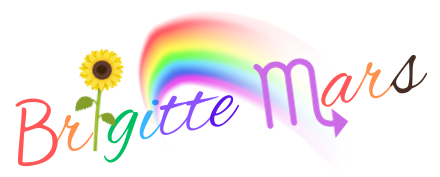Natural Pain
Pain can serve a protective function by letting one know that something is wrong. Resolving the underlying problem, when possible is the best way to eliminate pain. The brain responds to pain by producing morphine-like hormones known as endorphins. Besides drugs, there are other ways to stimulate endorphin production.
The amino acid, tryptophan (found in avocados, bananas, grapefruit, nuts, seeds, papayas, peaches, and tomatoes) encourages production of the calming neurotransmitter, serotonin. Particularly beneficial foods for pain include broccoli, cauliflower, winter squashes, sesame, and flax seeds. Strawberries contain natural salicylates and are cooling and anti-inflammatory. Enzymes, present in unheated foods, reduce inflammation, which is often a factor in pain.
Herbs that help pain can be classified in several ways. Analgesics help allay pain when used internally without affecting consciousness. Anesthetics numb existing pain either locally or generally. Anodynes are sedating and help keep pain from being transmitted. Antispasmodics relax muscle spasms. Sedatives promote rest and peace.
Cayenne pepper stimulates endorphin production and is an anti-inflammatory. agent. Topically it is used diluted in salves, as it blocks transmission of substance P, which transports pain messages to brain.
Corydalis root, a relative of Poppy helps relieve pain from traumatic injury. Corydalis binds with opium receptors in the body and slows down the breakdown of choline. It is analgesic, antispasmodic, and sedative.
Cramp Bark is an analgesic, anti-inflammatory, antispasmodic, and sedative. It can calm menstrual cramps, rheumatism and spasms of legs and lower back.
Feverfew herb inhibits certain inflammatory type hormones known as prostaglandins and prevents blood platelet aggregation (clumping together). Used on a regular basis it helps prevent migraines, relieve arthritis and menstrual cramps. Feverfew is anti-inflammatory and antispasmodic.
Ginger root is warming and improves circulation. It can improve the pain of arthritis, backache, and menstrual cramps. Chew a piece of fresh root for sore throat. Ginger is analgesic and anti-inflammatory.
Hops strobiles, a relative of Marijuana, are sedating to the nervous system. They calm cramps, insomnia, restlessness, stomachache and stress. Hops is an anodyne, antispasmodic, and sedative.
Kava kava root, enjoyed by many tropical island natives is a skeletal and muscle relaxant. It improves anxiety, cramps, gout, insomnia, neuralgia, pain and rheumatism. It is an analgesic, antispasmodic, and sedative.
Passionflower, doesn’t make you more passionate, but slows the breakdown of neurotransmitters serotonin and norepinephrine. Try it for cramps, headache, insomnia, muscle spasms, neuralgia, shingles and stress. It is anodyne, anti-inflammatory, antispasmodic and sedative.
Skullcap herb sedates the brain and spinal column and encourages. endorphin production. It is used for arthritis, delirium, emotional trauma, headache, insomnia, neuralgia, and restlessness. It is antispasmodic and sedative.
Valerian root is a smooth muscle and skeletal relaxant. Try it for cramps, headache, insomnia, neuralgia, shingles, stress and trauma. Valerian is anodyne, antispasmodic, and sedative.
White Willow bark contains salicin; one of the original aspirin compounds and is a traditional herb for arthritis, backache, gout, headache, joint inflammation, migraine, and general pain. It is an analgesic, anodyne, and anti-inflammatory.
Vitamin B-1 and calcium raise one's pain threshold. Vitamins C and E are necessary to produce endorphins. Magnesium can help relax muscle spasms.
DLPA is made from the essential amino acid, phenylalanine. DLPA works by inhibiting the enzymes that destroy endorphins so that the naturally occurring endorphins can survive longer. DLPA helps relieve chronic pain yet does not block the nerve transmission of short-term acute pain. Although DLPA is very safe, it should not be used with MAO inhibiting drugs, during pregnancy or by phenylketonurics.
Exercise and acupuncture help stimulate endorphin production. So effective is acupuncture, that in the Orient it is sometimes used by itself as anesthesia during surgeries.
Yoga, Rolfing, massage, chiropractic, and osteopathic work may all help relieve pain. Check out the book Somatics by Thomas Hanna. Practice deep slow breathing. Visualize inhaling healing light and exhaling pain out of your body. The color blue is considered anti-inflammatory. Some have found that exposure to blue light; visualizing breathing in the color blue, or simply wearing blue helps them to experience less pain. Tighten the area around where the pain is centered and then release can help to alleviate achiness.
Some find it helpful to write about their experience with pain in a journal. This may even help you to find clues such as “pain is lessened on the days where you take a walk:” or eat all raw,” for example. Art can be used to describe your pain. Is it like a biting dog or burning flames? Draw or paint it. In your mind's eye, muzzle the dog or pour water on the fire. Then draw the images that may soothe pain and visualize them giving relief.
Most throbbing pain will be best relieved by a cold application, such as an ice pack or cool compress. If it hurts too much to touch, cold is usually your best bet. Sharp pain is often remedied by heat such as a hot water bottle or hot herbal compress. A hot bath in which pain-relieving herb teas or Epsom salts (1 pound) has been added may also be of benefit.
Before putting anything on the area get a sense of what is appropriate. Heat or cold? Heavy or light?
Things that can be used topically include castor oil, charcoal poultices, hot ginger tea, hot salt packs, or cold mashed cucumbers. Essential oils can be used in topical liniments to help relieve pain. Among the most pain relieving are birch, cajeput, camphor, chamomile, eucalyptus, frankincense, geranium, ginger, lavender, peppermint, rosemary and wintergreen.
Since many of the drugs available for pain and when used for extended periods can be habit forming, cause fatigue and mental fogginess, and even constipation, it may well be worth exploring alternatives to. Whenever possible, correct the cause of pain.
